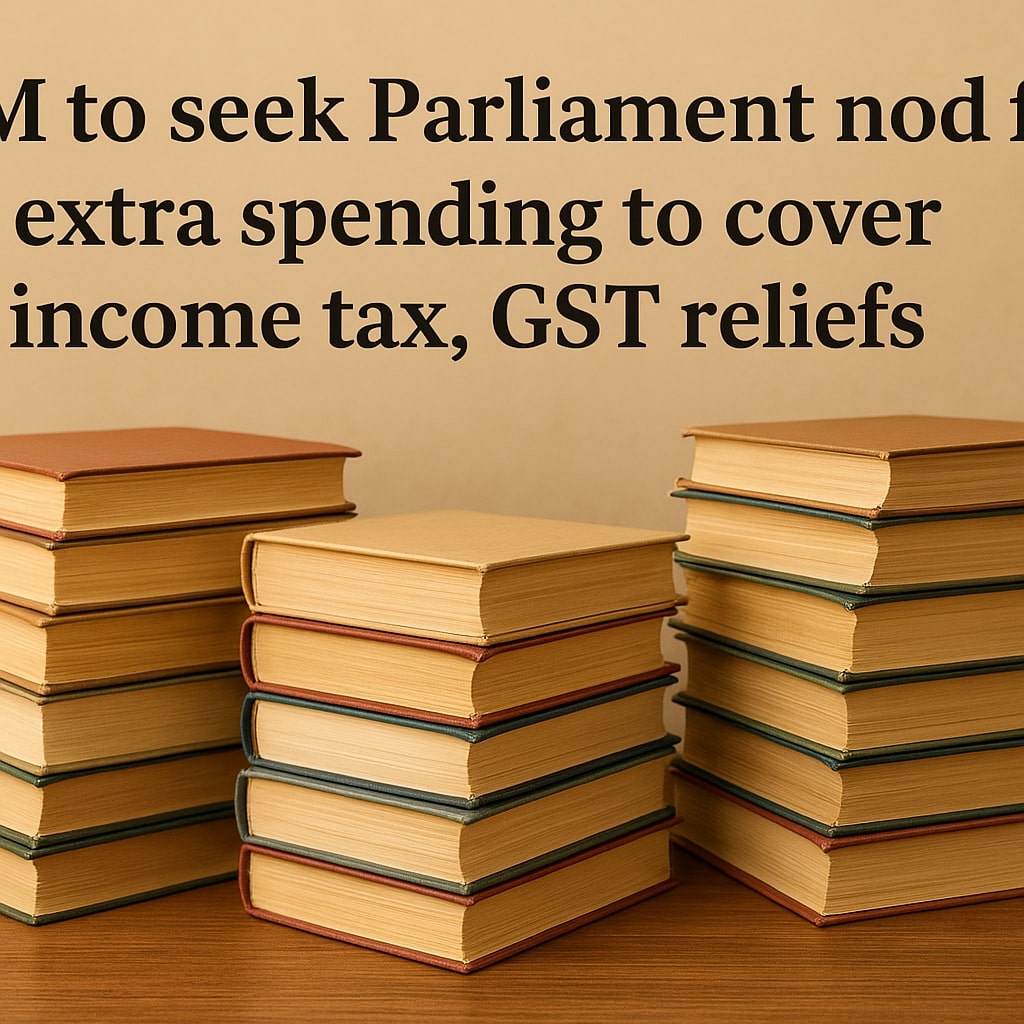
Union finance minister Nirmala Sitharaman is likely to seek Parliament’s nod for additional government funds for fiscal 2026 in the winter session to cover the revenue shortfall from personal income tax and goods and services tax (GST) cuts in the ₹50-trillion annual budget, two people aware of the development said.
The actual amount of the supplementary grant will be finalized by the second half of November, following consultations between expenditure secretary V. Vualnam and government departments, said one of the two persons.
The Centre sought Parliamentary approval for net additional spending of ₹95,605 crore in two tranches in 2024-25 and for net extra spending of ₹1.37 trillion in the year before. This is the net additional cash spending after adjusting for savings from various other heads.
A significant cut in the personal income tax rate and GST rates, a higher fiscal deficit seen so far as a percentage of the target compared to the previous fiscal year, the impact of cooling inflation on nominal gross domestic product (GDP) growth, and higher spending requests from different ministries appear to have necessitated the supplementary demand.
Policymakers hope the consumption boost arising from direct and indirect tax relief will increase revenue collections in due course, making up for and potentially exceeding any short-term impact on the exchequer.
Sitharaman had said the GST rate rationalization rolled out on 22 September aims to benefit the poor and the middle class, farmers and small businesses while boosting consumption and investments, delivering a ₹2 trillion demand stimulus to the economy, Mint reported on 18 September.
Fiscal deficit
The estimated revenue impact of personal income tax relief is likely to be approximately ₹1 trillion, and a little more than ₹1 trillion for GST reforms on an annual basis—a portion of which will apply for the current year, explained by an industry expert.
“This estimate is based on very broad parameters, and we have to see how the expected consumption boost will neutralize the effect of rate reduction,” he said.
“There will probably be some net loss in revenues this year and later on, an increase in tax buoyancy can make up for it,” he added.
Cooling inflation is expected to reduce the effect of price rise on tax revenue this year.
“This year, the main risk arises from the low level of the nominal GDP growth rate. The real GDP growth is doing very well. But the difference between real and nominal growth is minimal because the wholesale price index (WPI) inflation, which affects the implicit price deflator, is very low. So, our overall expectation is that there will be a small slippage in the fiscal deficit numbers in 2025-26,” he said.
The government estimated a fiscal deficit of ₹15.7 trillion, or 4.4% of GDP, for 2025-26, to be met through borrowings.
In the April to August period, fiscal deficit stood at ₹5.9 trillion, 38% of the annual target, compared to 27% in the year-ago period, showed data from the Controller General of Accounts.
The government estimate for real GDP growth is 6.3-6.8% and 10.1% in nominal terms. In the June quarter, it expanded 7.8% in real terms and at 8.8% in nominal terms.
The government typically reduces non-priority spending in the final months of the fiscal year to balance its budget if there is any strain on revenue receipts.
For 2026-27, however, minor overshooting of the fiscal deficit may not be an issue, given that the Centre is shifting from fiscal deficit to debt-to-GDP ratio as the fiscal anchor.
Revenue cushions
While tax rate cuts may depress revenue receipts in the short term, the reduced subsidy burden resulting from lower food and crude oil prices, combined with high non-tax revenue receipts, will, however, cushion the revenue impact.
The Centre’s subsidy bill is showing a softening trend in line with cooling inflation. The reduction in the crude oil price from the average of $78 a barrel seen in 2024-25 to $68 in the April-October period is helping to reduce the petroleum subsidy.
Deflation in food prices has also helped lower the government’s food subsidy to ₹64,008 crore in the first five months of this fiscal year, down from ₹1.13 trillion seen in the same period a year earlier.
The Reserve Bank of India’s (RBI) record dividend payment of ₹2.69 trillion, which is more than the budget estimate, will also partially contain the impact of tax rate cuts on fiscal deficit, said Srivastava.
The government had estimated a dividend worth ₹2.56 trillion this fiscal from the RBI, nationalized banks and financial institutions for 2025-26.
Experts also said the National Democratic Alliance government has demonstrated its commitment to fiscal discipline and prudence.
“The government had promised to bring down fiscal deficit from 9.2% in the pandemic year of 2020-21 to the level of below 4.5% by 2025-26 in a fairly steady decline over the period. That process has been implemented. It is highly likely the government will do the same in bringing the central government debt-to-GDP ratio to 50% give or take one percentage point, by March 2031, as announced,” said a third person, close to discussions, on condition of anonymity.
In 2024-25, it was at 57.1% of GDP.